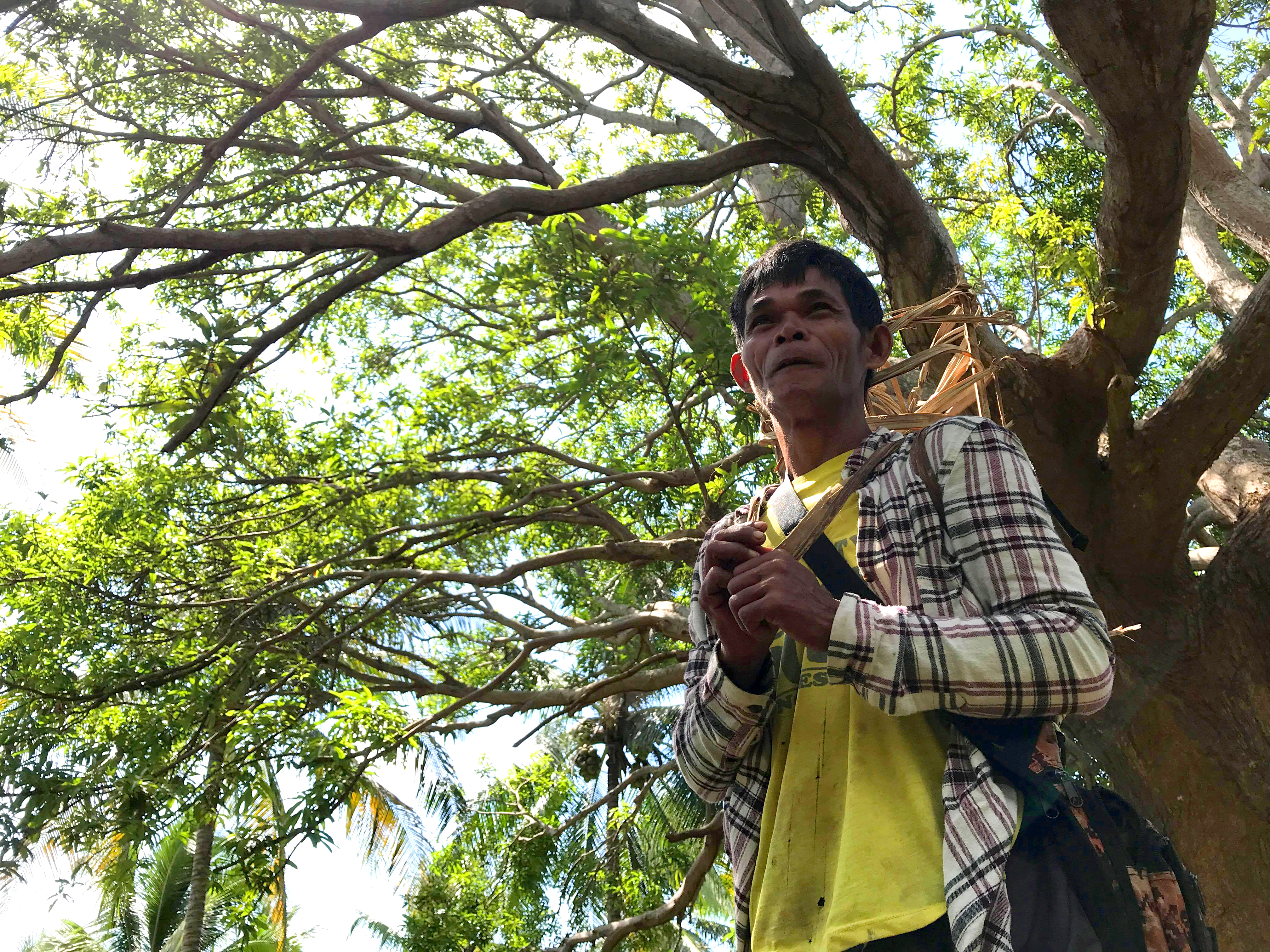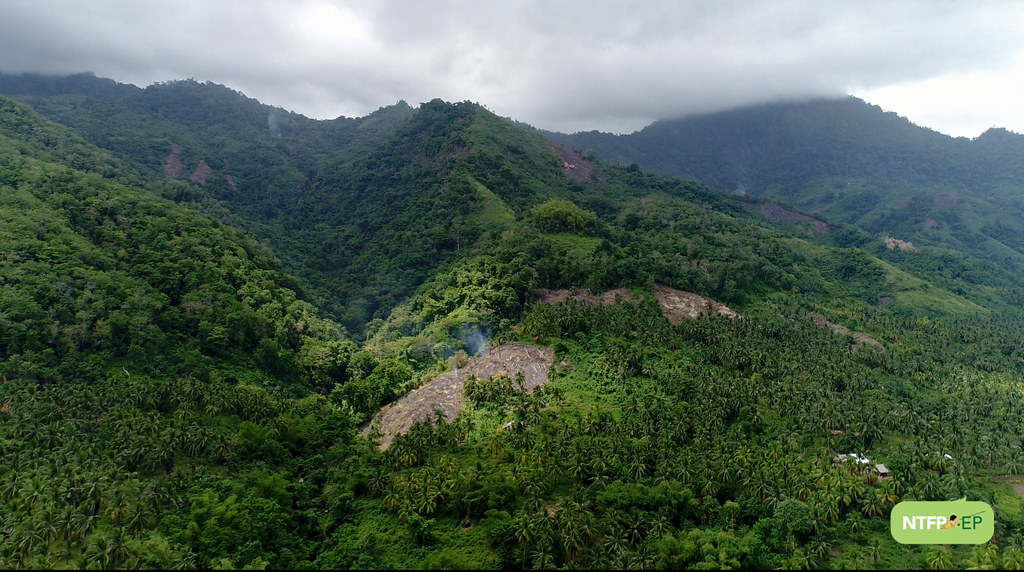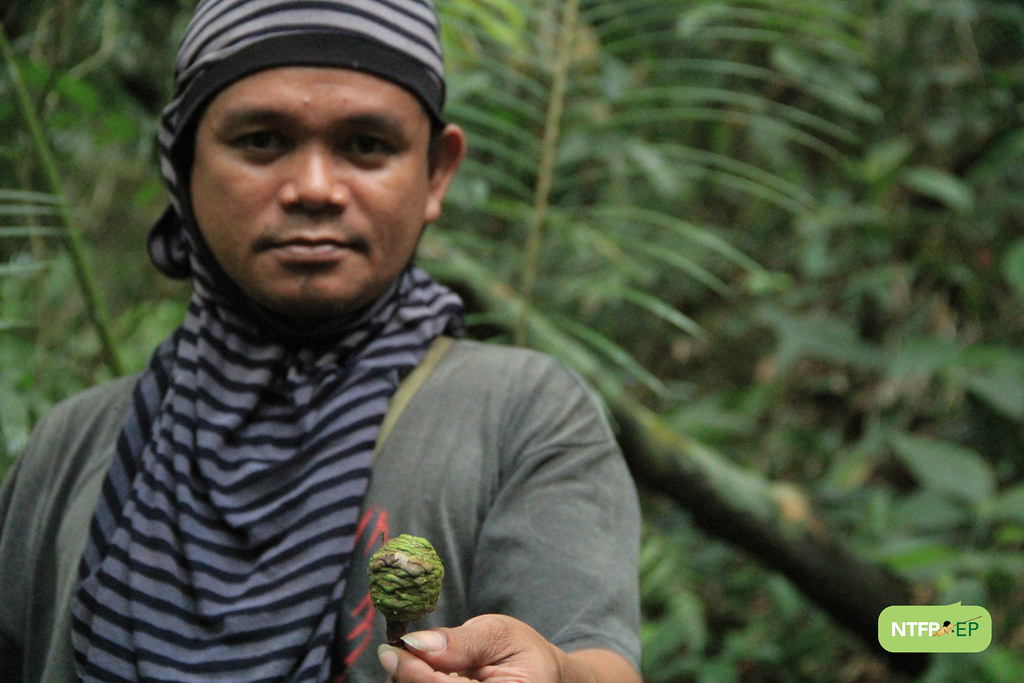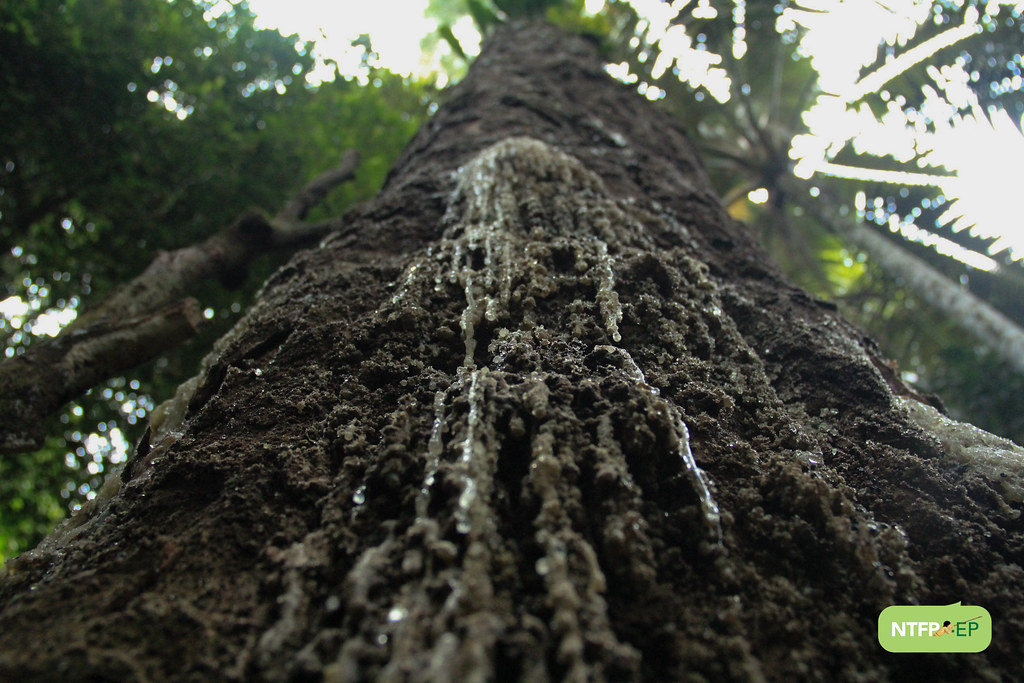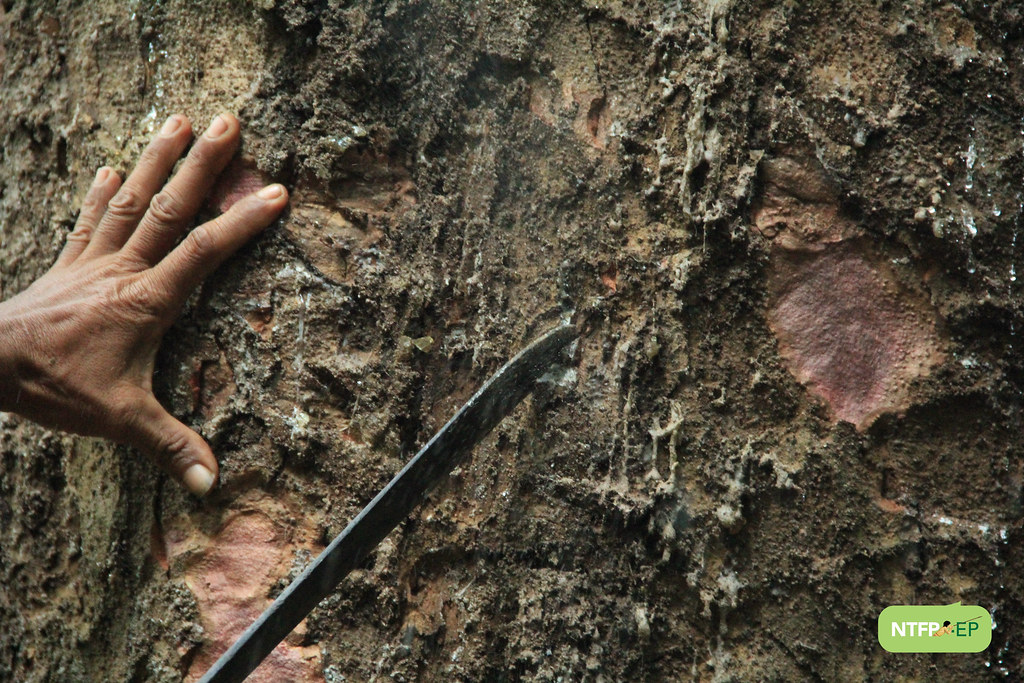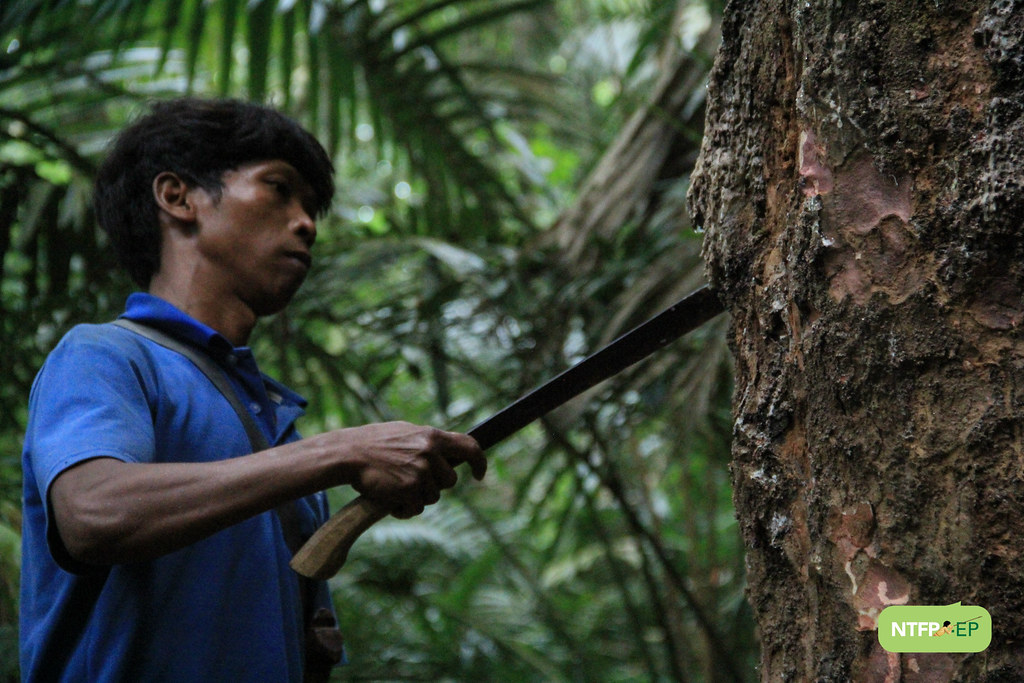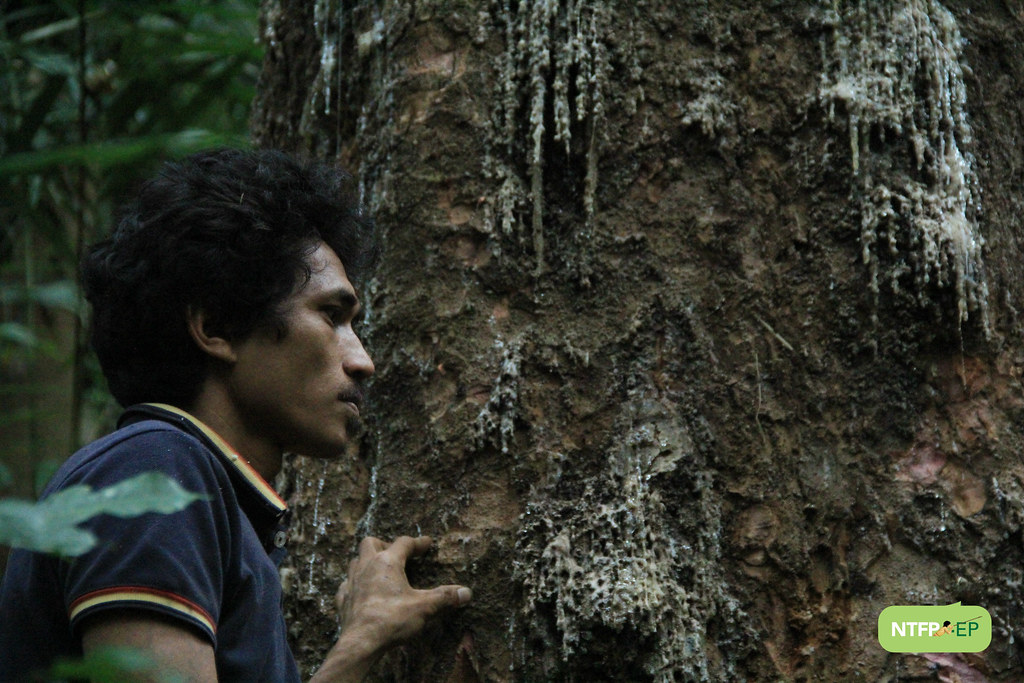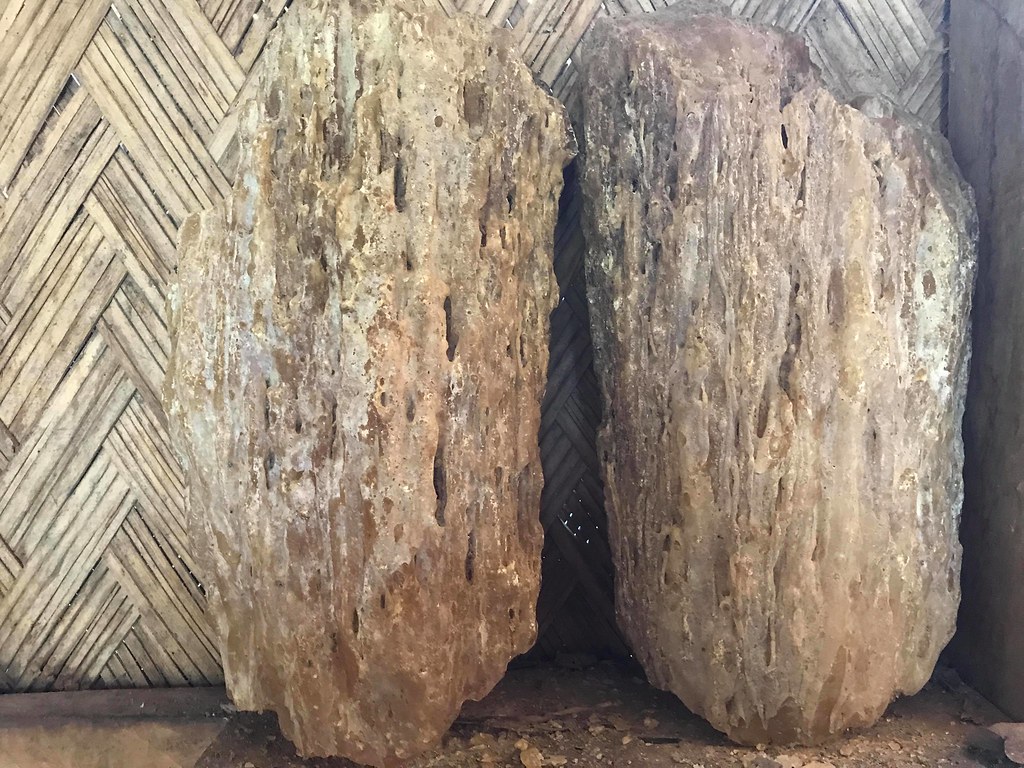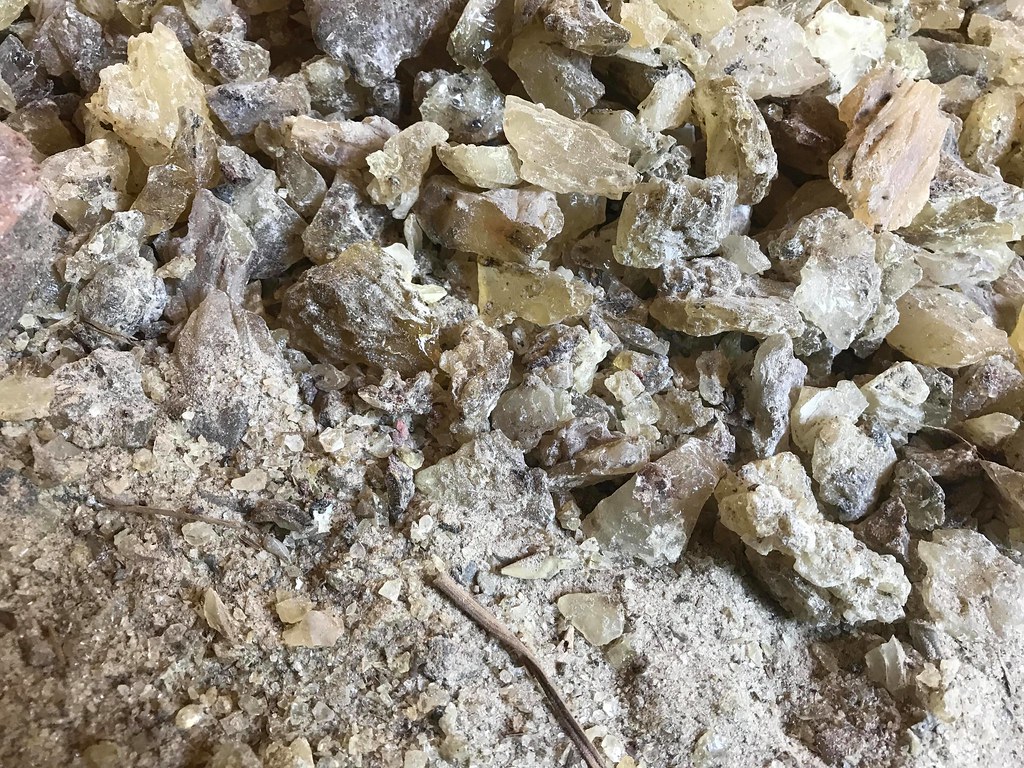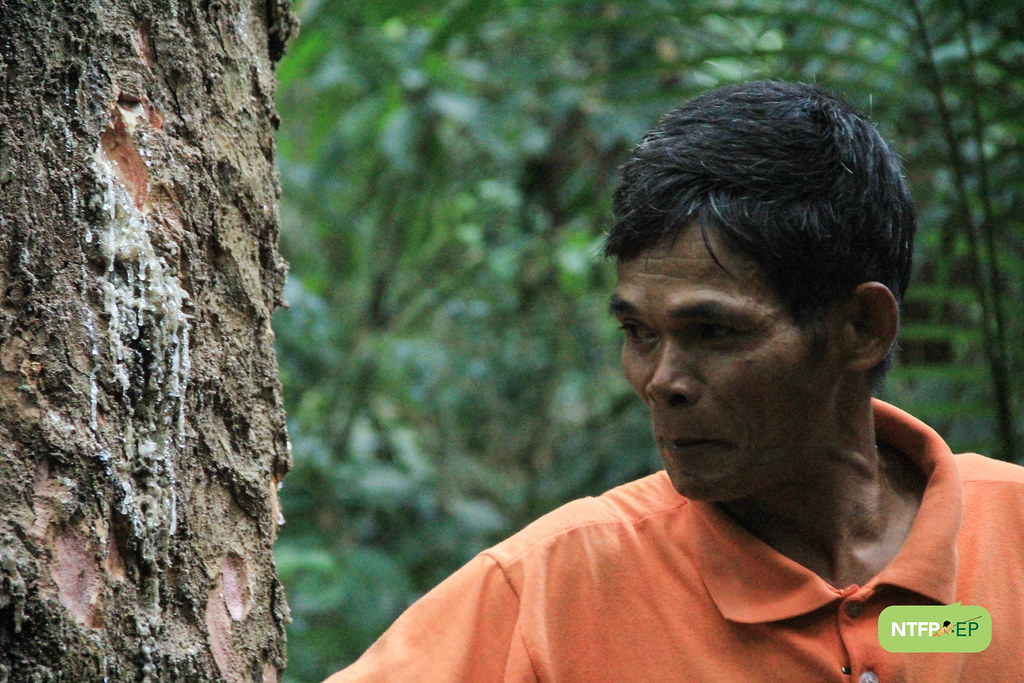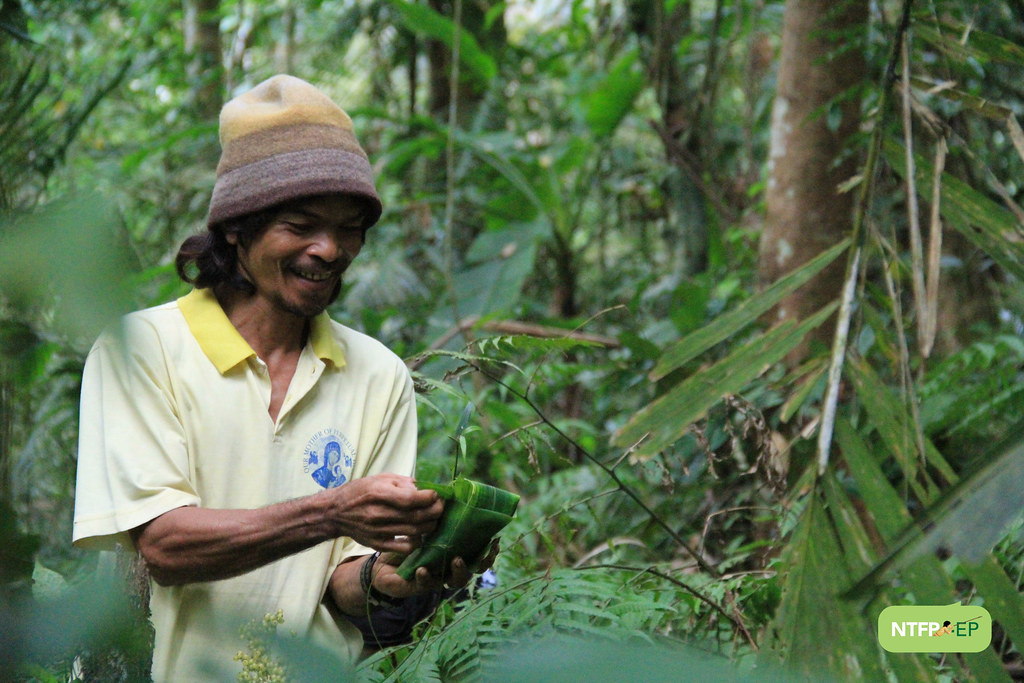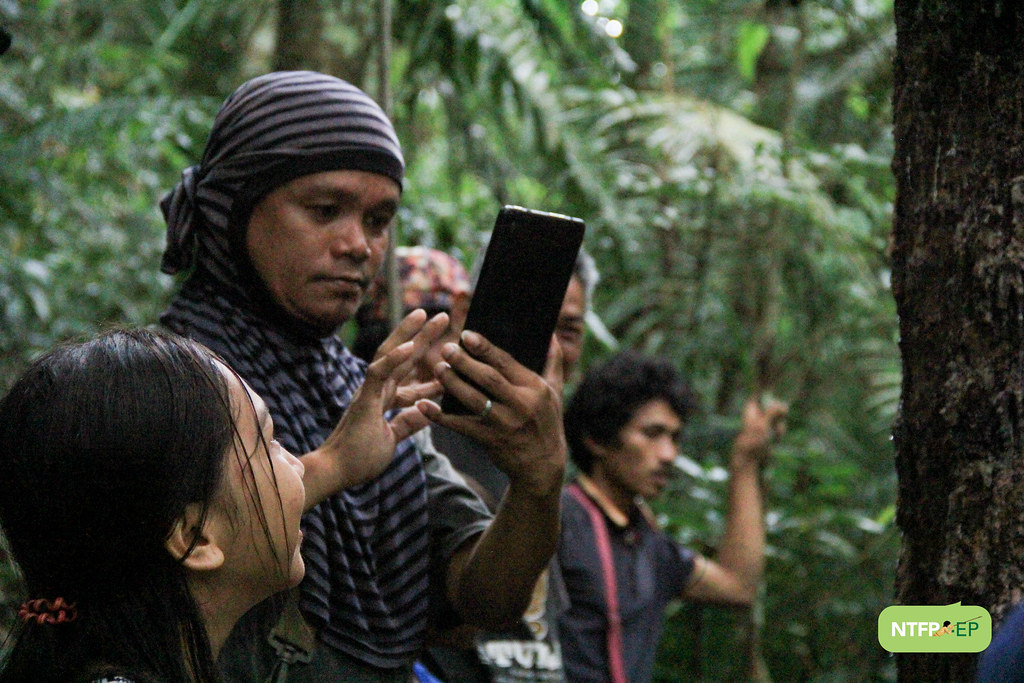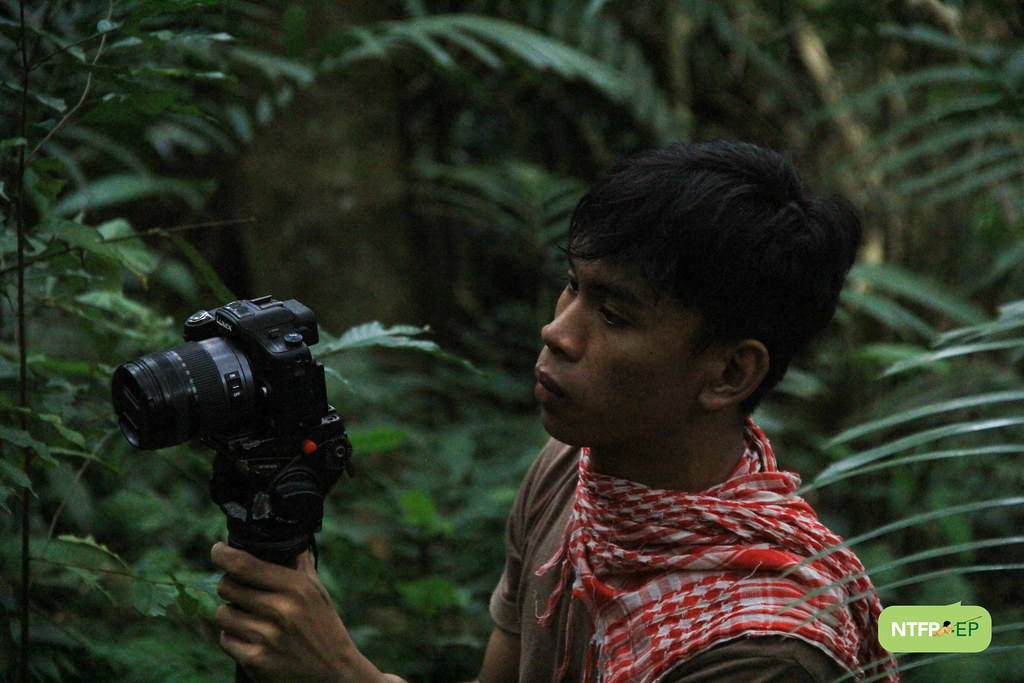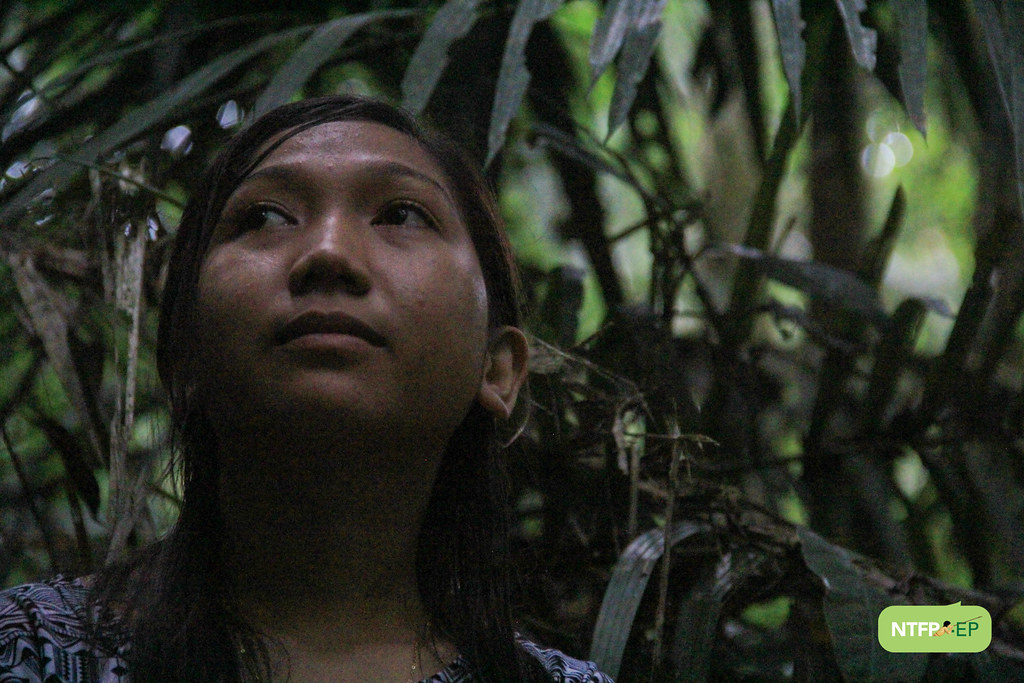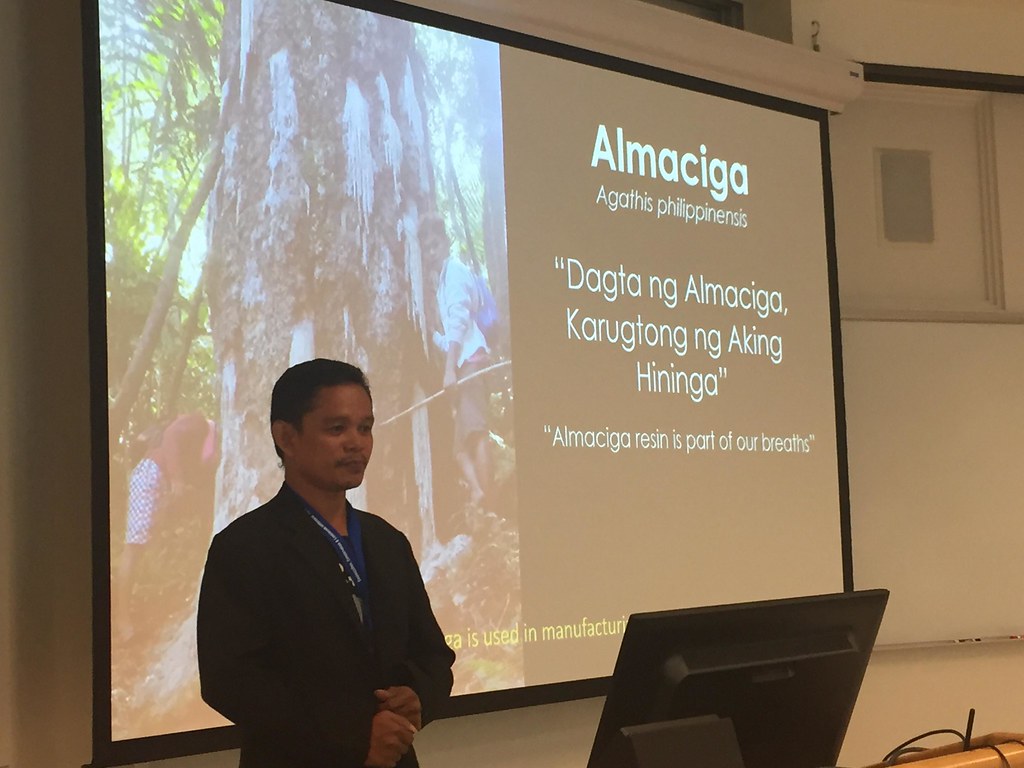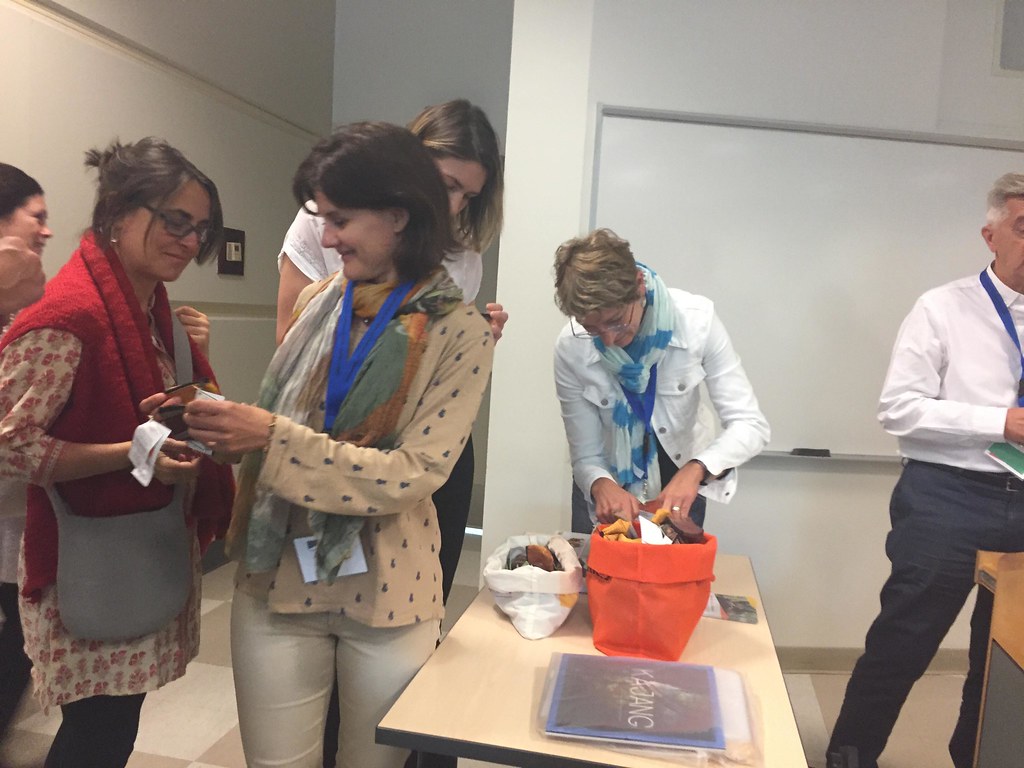PALAWAN, Philippines – an island province known for the abundance of forest resources, is hailed the country’s last frontier. It is home to a number of indigenous people, one of whom are the Palaw’an.
Pewpenew Mountain, in Brooke’s Point, Palawan
The municipality of Brooke’s Point in south-eastern Palawan Island is 192 kilometers away from the provincial capital, Puerto Princesa. Amas, one of its 18 barangays, was established in 1935. A few kilometers hike from the barangay center takes one atop Pewpenew mountain, one of the community’s conservation area.
Rolito holding an almaciga fruit
Valuable forest resources found within the community’s reserves like in Pewpenew have been managed sustainably by generations of Palaw’an through a lore that bespeaks of the group’s rich traditional ecological knowledge. Agathis philippinensis or almaciga, is a tree native to the Philippines that usually grows in elevated forested areas and produces a high-grade resin. This valuable non-timber forest product is among the Palaw’an peoples’ priced forest possession.
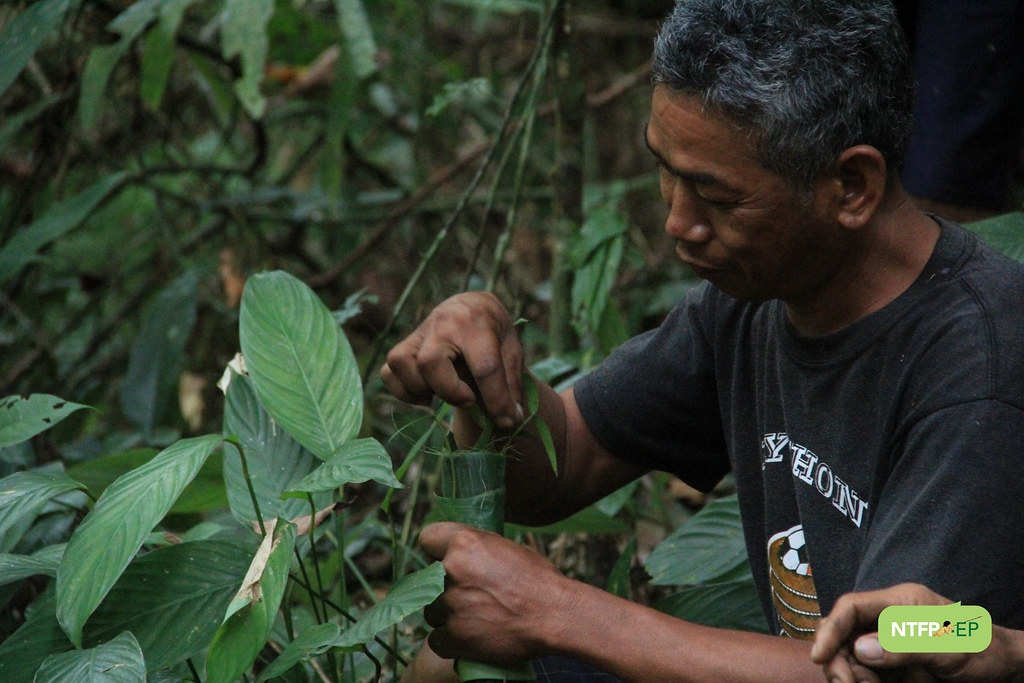
Collecting almaciga seedlings
Making sure the holes are far enough from each other
Around three sturdy but gentle taps on the trunk of the almaciga tree make a small incision. It is from this hole where drops of clear liquid start flowing. The wound is left open to accumulate enough resin as it solidifies after a few weeks. The tappers usually come back and re-tap on the same part around two to three more times within a span of a few months, depending on the tree’s productivity. The chunks are then collected very carefully.
Every almaciga tapper should follow their traditional rules and regulations
Verifying the perfect time to harvest resin
For many tappers, the almaciga trees they own have been passed on as ancestral gifts from generations of fathers to their children. Managing Almaciga trees is no easy feat. Certain rules set by the Panglima should be followed at all times.
The Palaw’an are traditionally governed by the Panglima system, a group of elders who makes the decisions over conflicts and over management of their forests and other resources. Edio (right) is a member of the Panglima while Carly (left) is the Indigenous People Mandatory Representative to the government.
When traders reached the shores of Palawan, this once traditional activity of resin harvesting eventually became commercial with the demand for industrial materials such as paints, varnishes, and plastics. Despite the huge market however, the Palaw’ano tappers often found themselves at the mercy of middle men and traders who left them with little to no benefit at all. To overcome this hurdle, the Palaw’an of Barangay Amas have started taking collaborative action.
Huge chunks are considered first class almaciga resin
While smaller chunks are bought at a slightly lower price
It was in 90’s when the Palaw’an in Amas decided to take charge over the business by forming Samahan ng mga Palaw’ano sa Amas, Brooke’s Point (SPABP), a community-owned cooperative that trades the resin collectively. The learning curve has been steep for SPABP as the group found themselves braving through several challenges throughout their existence. Through the years, their sense of community not only allowed them to have a better economic status but also to be recognized as rightful managers of their ancestral lands. Today, their total land claim is now at 14,000 hectares, covering three other barangays that is part of the Mount Mantalingahan Protected Landscape.
It was through their collective will that SPABP and its members have been constantly improving. Understanding the importance of forest conservation and cultural preservation, they youth have taken it upon themselves to ensure the continuity of their traditional knowledge.
To guarantee consistent supply, the group started putting up an Almaciga nursery
The Palaw’an elders and youth have both made strong commitments to protect their identities as Palaw’an.
The Palaw’an people’s sense of community is not only bound by a cultural heritage but also by their respect for nature and its abundant gifts to them.
John Vincent, a Palaw’an youth volunteer
Maika, a Palaw’an youth volunteer
The Palaw’an of Barangay Amas were able to share to a broader audience their almaciga story on Tuesday, 29 May, 1030AM during our session at the Communities, Conservation & Livelihoods Conference: Creating Fair Market Spaces for Indigenous Communities’ Products, Special-3C Fair Markets and Local Economies (S165)
Rolito Landuan, Operations Manager of SPABP explaining the importance of Almaciga in the governance of their ancestral domain.
Tanya Conlu, Community-Based Conservation Coordinator, sharing about NTFP-EP’s work
Despite the number of sessions happening simultaneously during that day, the ICCA session garnered much commendation and support from the conference attendees!
Participants availing of their free Hinabol pouches made of abaca.

